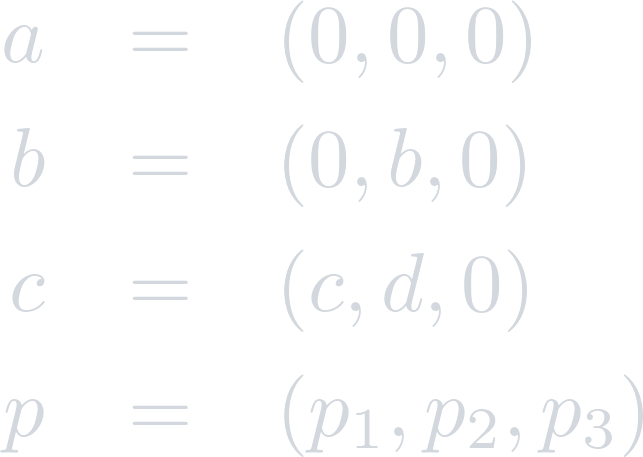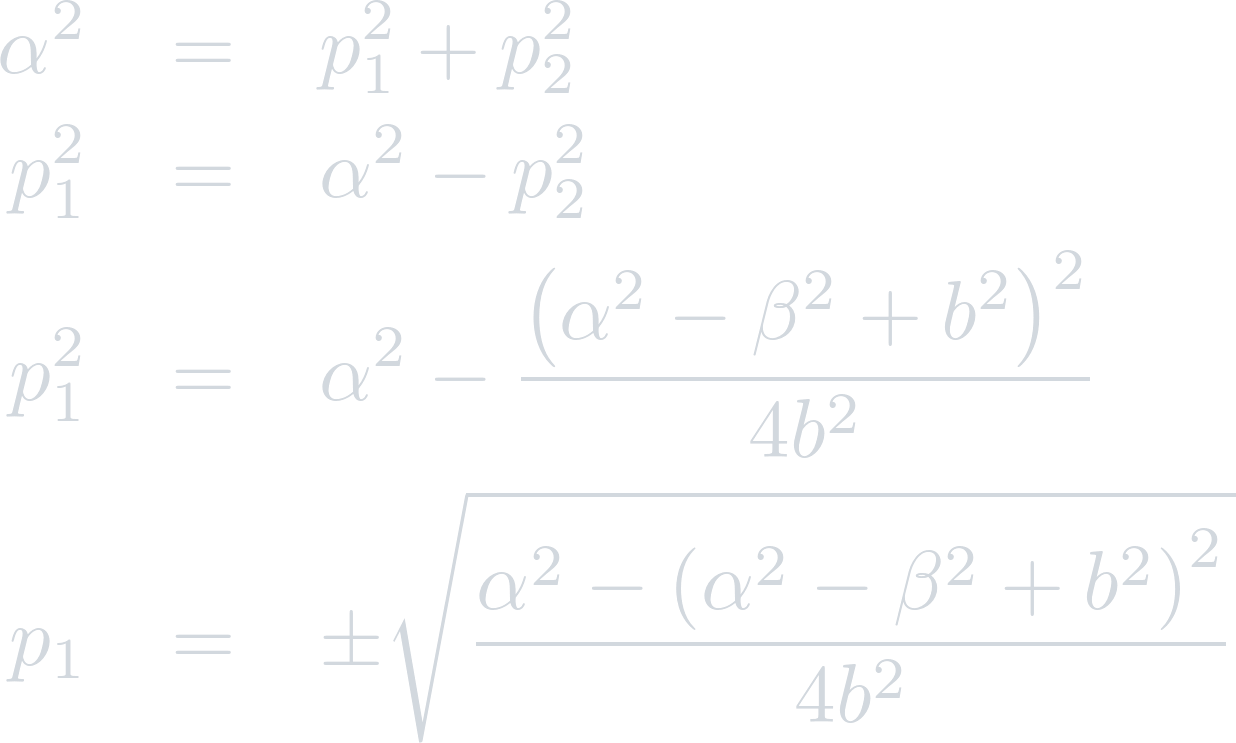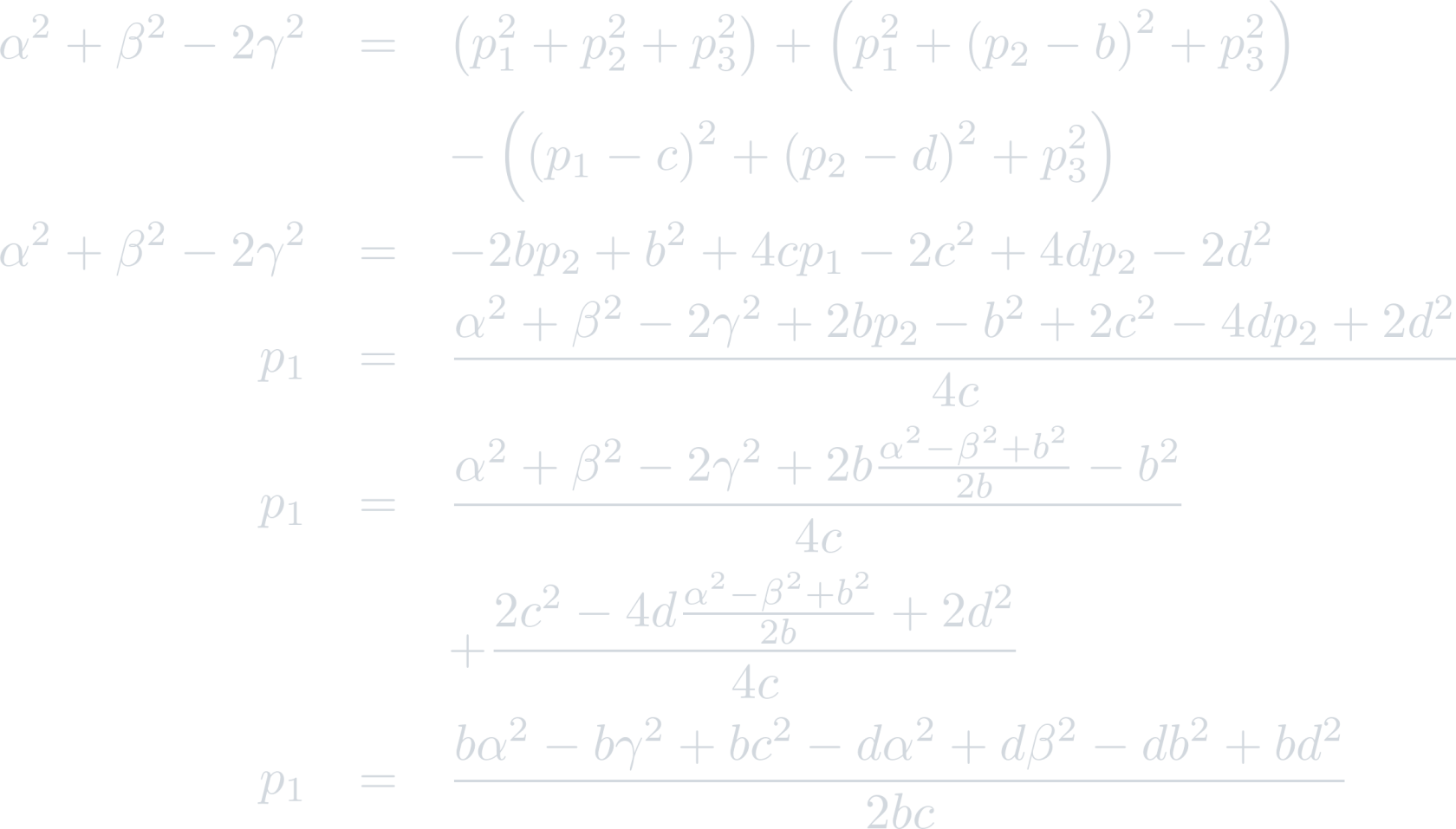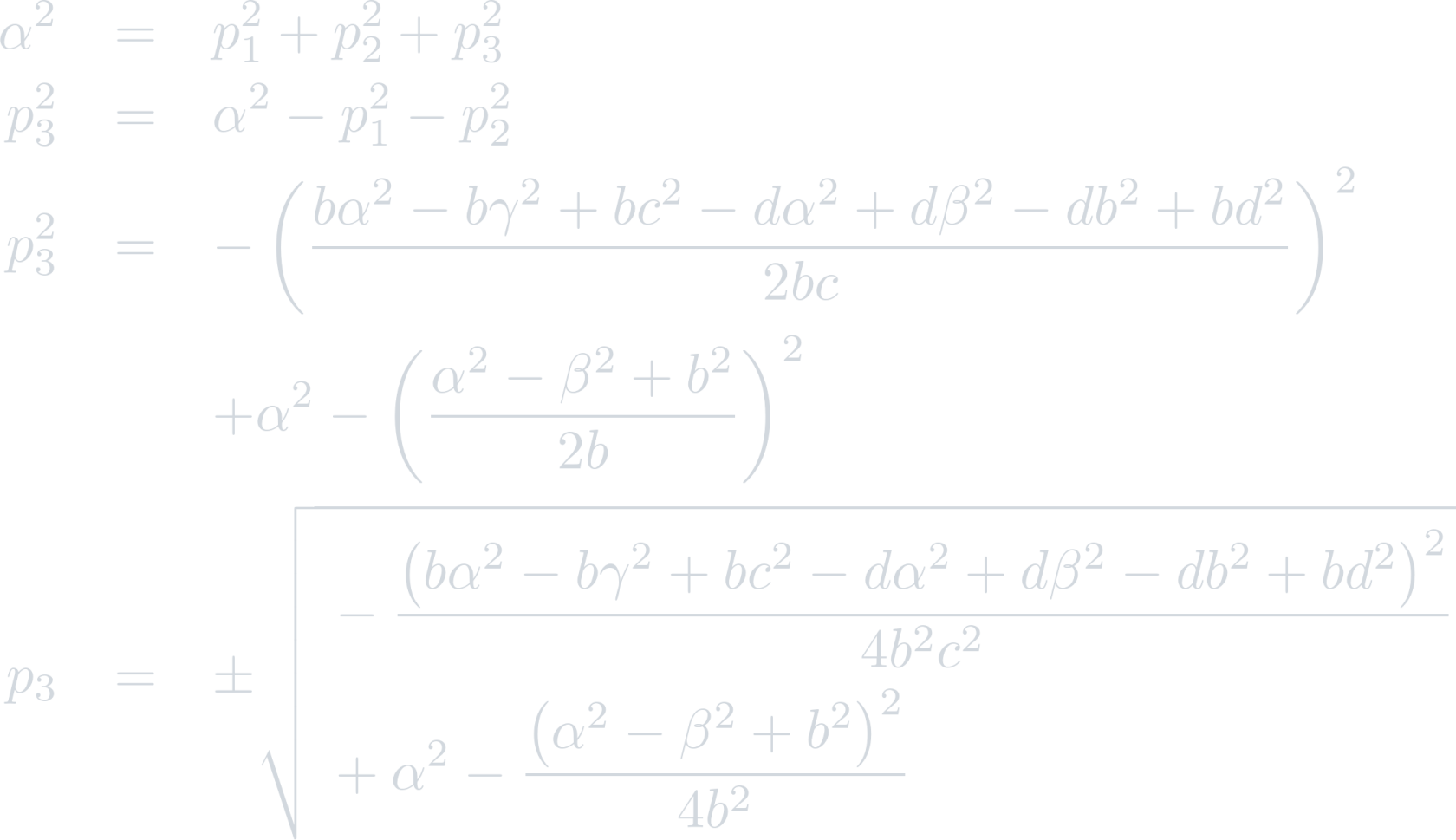The answer to my post last week is yes. Here’s the quick (intuitive) proof:
First, note that ![]() and
and ![]() is the surface of two spheres in three dimensions, and their intersection is either a circle or a point (we know they are not the same sphere since a and b are distinct and that they must intersect because we know p exists). If it is a point, then p is that point (and since we have not used gamma we have proved the hypothesis).
is the surface of two spheres in three dimensions, and their intersection is either a circle or a point (we know they are not the same sphere since a and b are distinct and that they must intersect because we know p exists). If it is a point, then p is that point (and since we have not used gamma we have proved the hypothesis).
If the intersection is a circle, it intersects the plane containing a, b, and c at two points, but only one is inside the triangular prism, and that must be the point p. We know it cannot be a point not on the plane, since if it was, two points would satisfy ![]() , and not satisfy the uniqueness condition.
, and not satisfy the uniqueness condition.
I personally prefer algebraic proofs though, so let’s crank some algebra!
First, without loss of generality, assume:

Where:
![]()
So, the equations become:

It is clear that the triangular prism does not provide any constraints on p3, so the uniqueness condition enforces that p3=0. Thus, resolving for p1 provides:

Since this point must lie within the triangle a b c, p1 must have the same sign as c, so:

Therefore:




